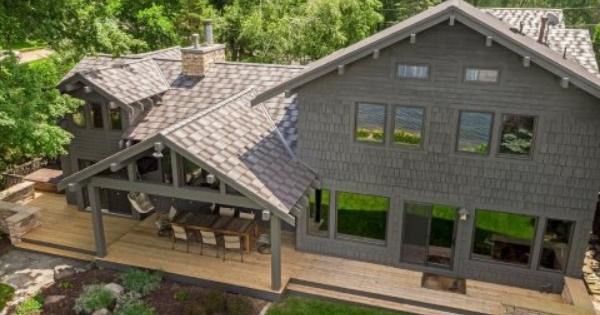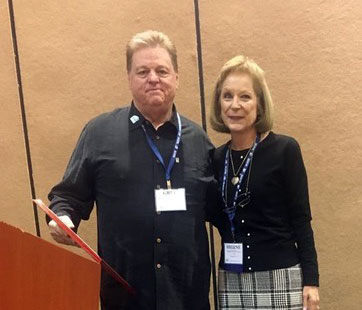MRA Calls for Strong Residential Resiliency Standards in Western States to Help Protect Against Wildfire Threats

Class A metal roofs can help protect homes against the potential of ignition caused by wildfire sparks.
The 2020 wildfire season came with a terrible awakening for many West Coast homeowners: Areas in Oregon, Washington and California that were not considered to be in the path of wildfire danger were under extreme threat, resulting in evacuations and unprecedented destruction.
As fires still rage in many areas, home resiliency experts say the priority moving forward needs to be on being better prepared. Except for California, which updated its residential fire codes for new construction in 2008, very few western states have considered mandates for wildfire resilient housing in wildland-urban interface zones. Now leading trade organizations such as the Metal Roofing Alliance (MRA) are calling for the adoption of standards and potential incentives that could help homeowners better withstand the growing threat of wildfire in states and regions that currently have no such initiatives.
Because of the behavior of wildland fires, how a home or building is designed and constructed is the most important factor in providing fire safety. Smart mandates have the potential to help homes survive a wildfire unscathed, as proven by the California codes that require homes built in wildfire vulnerable areas to be built with fire-resistant roofs and siding, interior sprinklers, decks and patios made of non-flammable materials, heat resistant windows and more. Research shows that homes built to these codes have sustained far less damage from wildfire than homes built prior to 2008.
“Gulf Coast states devastated by hurricane destruction have learned hard lessons about the need to build more resilient homes that can stand up to severe climate impacts and have established standards designed to help reduce the damage and danger to homes, such as those set by Miami Dade,” said Renee Ramey, MRA Executive Director. “The West Coast now needs to adopt that mindset when it comes to the regional climate conditions that will increasingly impact homeowners in wildfire-prone areas.”
With a home’s roof being the single most vulnerable area for ignition in the event of a wildfire, materials such as quality metal roofing systems that carry a Class A rating for fire resistance are essential, yet their adoption in the west isn’t nearly as high as it is in other places. Fire-resistant building materials also aren’t particularly expensive, especially when considering a metal roof will last decades longer than other types of roofing materials. In fact, a study by Headwater Economics found that “a new home built to wildfire resistant codes can be constructed for roughly the same cost” as a typical home and certainly is much less costly than the potential damage to a home that a wildfire can cause.
As this year’s wildfire season damage on the west coast is still being assessed, the MRA is urging the housing trade, builders and local officials to help homeowners be better prepared for future wildfire seasons by considering the following:
Institute fire-resistant building mandates
Like California, the population in wildland-urban interface areas has grown tremendously in recent years. That’s where homes meet or intermingle with flammable vegetation such as near or in forested areas, raising the threat of wildfire damage to homes. New standards that call for Class A roofs and discourage highly flammable materials such as wood shake roofs, in addition to other fire prevention and safety measures, should be evaluated and adopted in locations subject to greater wildfire risks.
Offer incentives to boost fire safety
In some cases, owners of older homes that live in areas increasingly threatened by wildfire are unable to pursue renovations or upgrades necessary to boost the protection of their homes due to costs. Tax credits, low-interest loans, local grants and other incentives or assistance programs may be necessary to help them make the necessary retrofits. Case in point is Big Bear Lake, a community in San Bernardino County, Calif., which passed an ordinance in 2008 declaring wood shake shingle roofs “a severe fire hazard and danger,” and armed with state and federal grants, offered cash incentives of up to $4,500 for homeowners to replace their roofs with ignition resistant versions. Now it’s rare to see a wood shake roof in the area, which also helps protect not only individual homes, but the entire community.
Provide education, resources and information
There are many ways to help increase the odds that a home will survive a wildfire. Local communities that face wildfire threats would be well served to better educate citizens about the latest resilient home improvement/maintenance practices, and provide safety, preparation and emergency planning information not just during wildfire season, but well in advance. Free resources from the Insurance Institute of Business & Home Safety (IBHS) and local communities such as San Mateo, Calif., contain excellent information, lists of resources and links to wildfire safety education that can assist homeowners. Trade industry experts such as Green Builder also have in-depth information about resilient home best practices available for free.
“As we witness the horrible destruction wildfires have and are causing, the more we can do as an industry and community to help homeowners protect themselves against these increasing threats, the better,” said Ramey. “Investing in preventative measures now that help decrease risks is essential to guarding against costly devastation and suffering in the future.”
Become an MRA member.
About Metal Roofing Alliance (MRA)
Representing metal roofing manufacturers in the United States and Canada, the Metal Roofing Alliance (MRA) was formed to help educate consumers about the many benefits of metal roofs. The main objective of MRA is to increase awareness of the beauty, durability and money-saving advantages of quality metal roofs among homeowners, as well as to provide support for metal roofing businesses and contractors. For more information, visit MRA.
Main photo courtesy of MRA member EDCO
Recommended For You

Western Colloid General Manager Awarded Prestigious Martin A. Davis Award by RCMA
Read More ...
The Speakers Bureau takes the stage
Read More ...
Women Take SRC Summit by Storm
Read More ...


















Comments
Leave a Reply
Have an account? Login to leave a comment!
Sign In